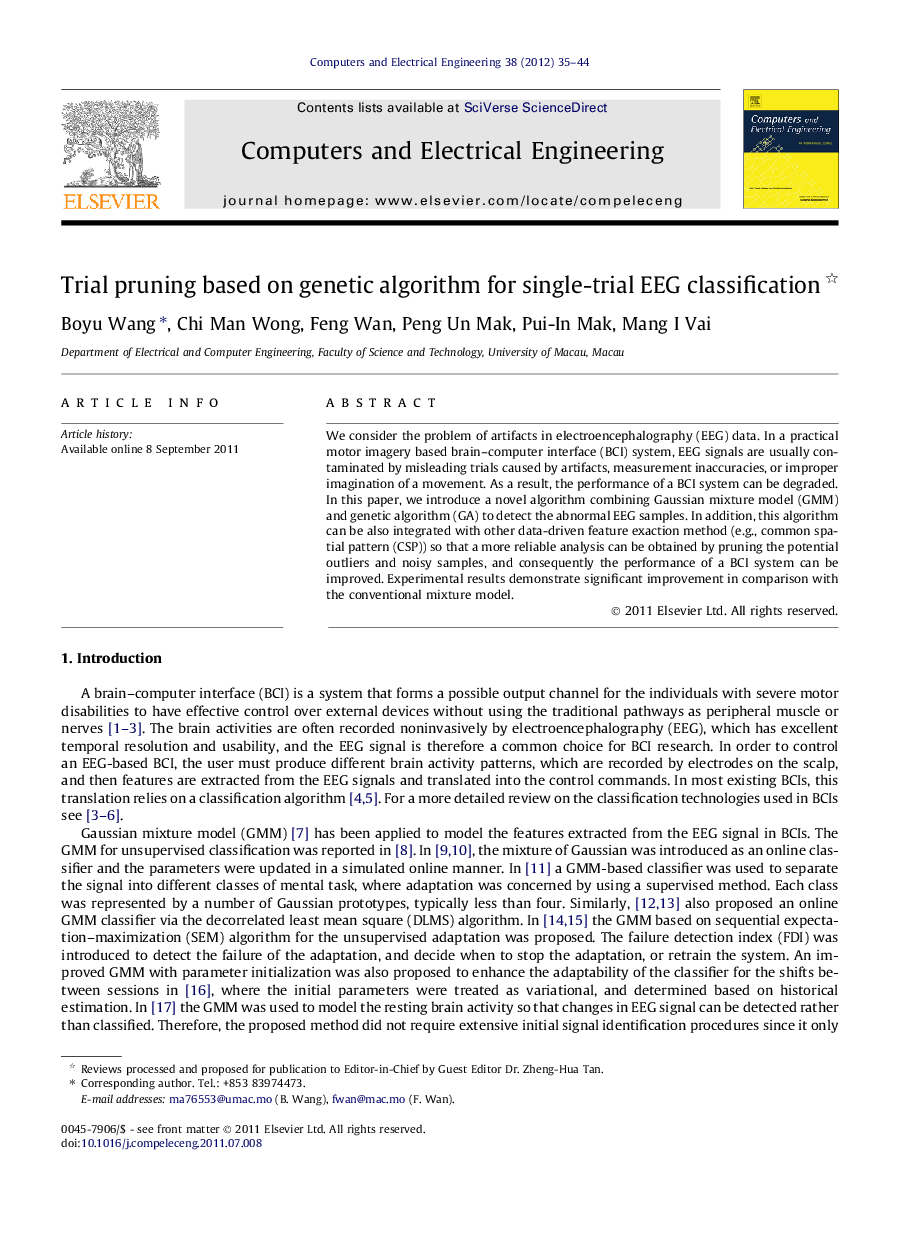| کد مقاله | کد نشریه | سال انتشار | مقاله انگلیسی | نسخه تمام متن |
|---|---|---|---|---|
| 453767 | 695013 | 2012 | 10 صفحه PDF | دانلود رایگان |

We consider the problem of artifacts in electroencephalography (EEG) data. In a practical motor imagery based brain–computer interface (BCI) system, EEG signals are usually contaminated by misleading trials caused by artifacts, measurement inaccuracies, or improper imagination of a movement. As a result, the performance of a BCI system can be degraded. In this paper, we introduce a novel algorithm combining Gaussian mixture model (GMM) and genetic algorithm (GA) to detect the abnormal EEG samples. In addition, this algorithm can be also integrated with other data-driven feature exaction method (e.g., common spatial pattern (CSP)) so that a more reliable analysis can be obtained by pruning the potential outliers and noisy samples, and consequently the performance of a BCI system can be improved. Experimental results demonstrate significant improvement in comparison with the conventional mixture model.
Figure optionsDownload as PowerPoint slideHighlights
► CSP-Gaussian classifier and GA are combined to prune abnormal EEG samples.
► Both label information and class conditional probabilities are utilized.
► Detect and prune the EEG trials contaminated by improper imagination and physiological noise.
► The CSP-Gaussian classifier is trained on a pruned EEG data set and achieves robust results.
Journal: Computers & Electrical Engineering - Volume 38, Issue 1, January 2012, Pages 35–44